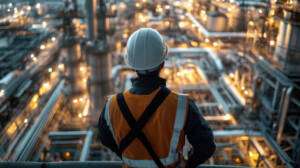In the energy sector, sustainability is no longer a buzzword but a core business imperative. Static equipment such as pressure vessels, heat exchangers and storage tanks plays a pivotal role in achieving energy efficiency and reducing emissions. By integrating eco-friendly solutions, industries can align with global sustainability goals while enhancing operational performance.
Let’s explore how carbon capture technologies, heat recovery systems and sustainable manufacturing practices are revolutionizing static equipment in the energy sector.

Carbon Capture Technology Integration
Carbon capture technology is transforming how the energy industry addresses emissions. Static equipment like absorption towers and pressure vessels are central to these systems. By capturing carbon dioxide (CO2) from industrial processes and storing it underground or repurposing it for commercial use, companies significantly reduce their environmental impact. Advances in materials science are enabling the development of high-efficiency membranes and sorbents that improve the performance of carbon capture systems. For instance, integrating CO2 capture into existing equipment designs minimizes additional energy requirements, making these solutions both practical and cost-effective.
Heat Recovery Systems for Energy Efficiency
Heat recovery systems are another game-changer for static equipment in the energy sector. These systems capture waste heat from industrial processes and convert it into usable energy, reducing overall energy consumption. Equipment such as heat exchangers and economizers are optimized to recover thermal energy efficiently. In refineries and power plants, advanced heat recovery technologies lower fuel usage and reduce greenhouse gas emissions. For example, regenerative heat exchangers store thermal energy for future use, maximizing resource utilization and supporting a circular energy economy.
Sustainable Manufacturing Practices
Sustainability begins with how static equipment is manufactured. The energy sector is increasingly adopting practices such as using recycled materials, employing energy-efficient production methods and designing for durability. Sustainable manufacturing not only reduces the carbon footprint of equipment production but also ensures longevity and lower lifecycle costs. Innovations like 3D printing and advanced welding techniques enable precise fabrication, reducing material waste. These practices contribute to the creation of high-performance equipment that supports both operational and environmental objectives.
Benefits of Sustainable Static Equipment
-
Reduced Emissions: Eco-friendly designs and carbon capture integration significantly lower CO2 emissions.
-
Enhanced Energy Efficiency: Heat recovery systems and optimized equipment designs improve energy utilization.
-
Cost Savings: Sustainable practices lower operational costs and minimize material waste.
-
Regulatory Compliance: Adopting sustainable solutions ensures alignment with environmental regulations.








